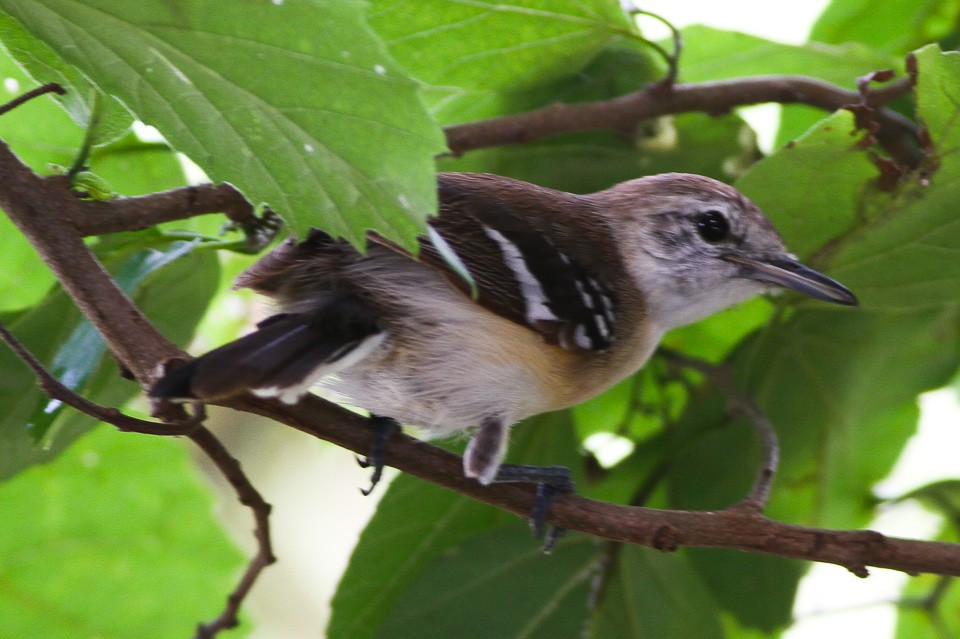White-fringed Antwren
A species of Black-bellied Antwrens Scientific name : Formicivora grisea Genus : Black-bellied Antwrens
White-fringed Antwren, A species of Black-bellied Antwrens
Botanical name: Formicivora grisea
Genus: Black-bellied Antwrens
Content
Description General Info
Description
The southern white-fringed antwren is 12–13 cm (4.7–5.1 in) long, and weighs 9–12 g (0.32–0.42 oz). The male has a grey-brown crown and upperparts, and black wings, tail, lower face and underparts. There are two conspicuous white wing bars and a white stripe running from above the eye down the sides of the breast and flanks. The tail feathers are tipped with white. The female's upperparts are much like the male, but females of the southern populations are orange below and have an orange supercilium. These occur south and east from southeastern Colombia and southernmost Venezuela. Northern population's females have underparts which are buff with dark streaks. It has a tu whistle followed by a trilled churet, and a repeated and accelerating tu-ik call. Southern birds also have a repetitive chump-chump-chump song, quite unlike the northern white-fringed antwren (Formicivora intermedia). 
Size
13 cm
Nest Placement
Shrub
Feeding Habits
White-fringed Antwren primarily consumes insects and spiders, foraging actively in shrubs and low vegetation. It exhibits specialized hunting techniques, including gleaning prey from leaves. Notable for its dietary preference for ants, this adaptation distinguishes white-fringed Antwren from many other birds.
Habitat
White-fringed Antwren occupies the understorey and midstorey of diverse wooded habitats in tropical and subtropical regions. It favors edges and is found in environments like mangroves, woodlands, riparian zones, and scrublands. Habitat-restriction varies across its range, from white-sand woodlands to seasonally flooded savannas, up to elevations of 1000 meters, and occasionally 1600 meters.
Dite type
Insectivorous
General Info
Feeding Habits
Bird food type
Behavior
The female lays two purple-marked creamy white eggs, which are incubated by both sexes, in a grass hammock nest low in a tree or shrub. Nests are occasionally plundered by predators, for example smallish mammals like the common marmoset (Callithrix jacchus), despite the birds' attempts to defend their offspring. Of a total of 13 birds studied in Colombia—in the Parque Nacional de La Macarena and near Turbo—only one was infected with blood parasites (an undetermined Plasmodium species). 
Distribution Area
This is a common and confiding bird of second growth woodland, usually found as territorial pairs. The southern populations are associated with scrubby bushes on white sandy soils and restinga habitat. These birds inhabit the lowlands, up to around 200 m ASL. In some places, they are sympatric with the rusty-backed antwren (F. rufa). The white-fringed antwren feeds on small insects and other arthropods taken from undergrowth twigs and foliage. 
Species Status
This bird is not considered globally threatened by the IUCN. However, its resilience to human alteration of habitat is not too pronounced, and in some regions its continuing presence would seem to depend on protection of habitat. 
Scientific Classification
Phylum
Chordates Class
Birds Order
Perching birds Family
Antbirds Genus
Black-bellied Antwrens Species
White-fringed Antwren 